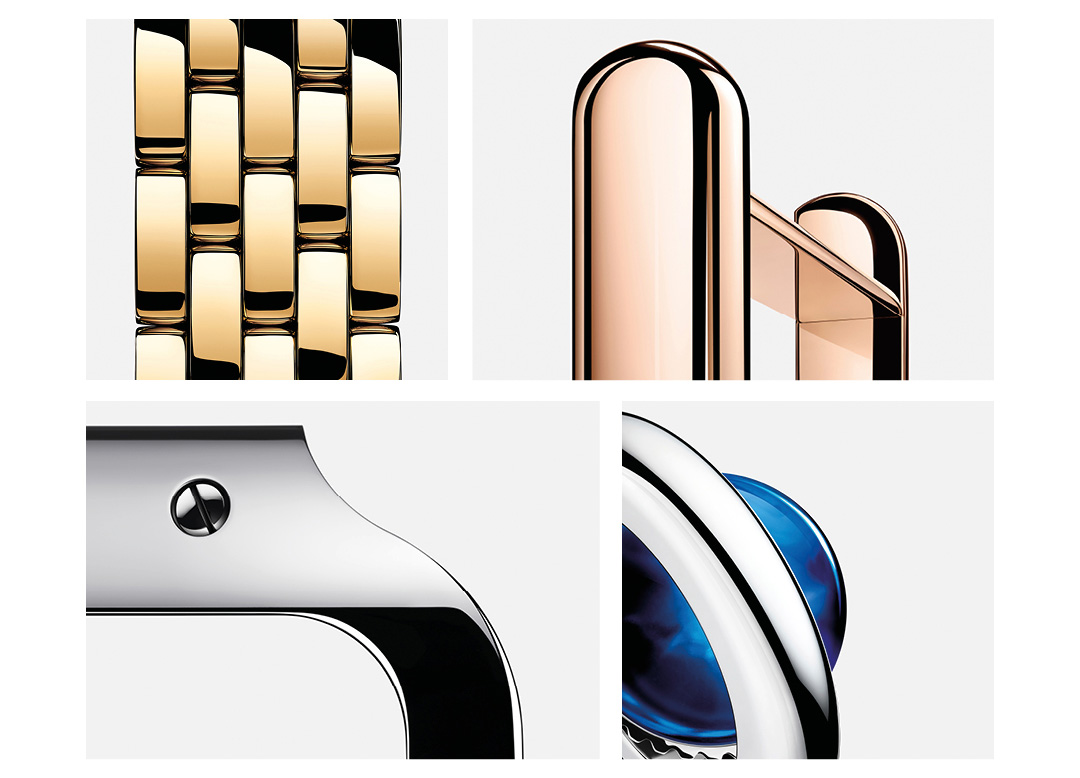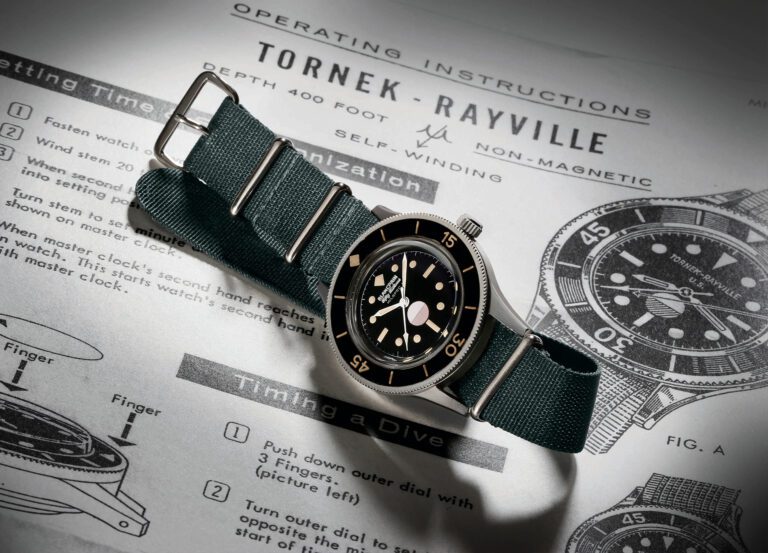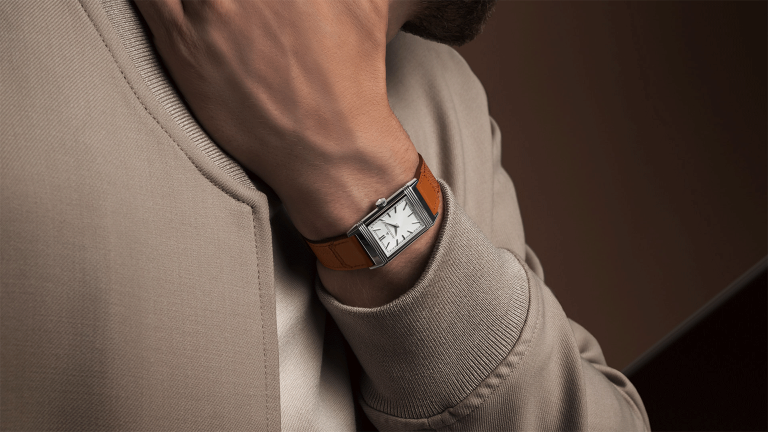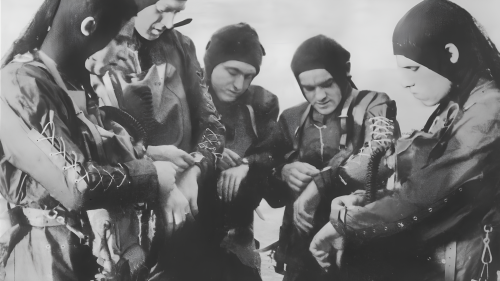Cartier - The Culture of Design
Cartier fine timepieces are known for many things, but perhaps none more so than their incredible shapes. Renowned the world over, the profile of a Cartier timepiece is instantly recognisable on the wrist. This is not by chance of course, but rather attributable to “The Culture of Design”, an enduring methodology the Maison has employed to great effect throughout its history. It consists of four main principles: shape, line, details and proportions. Apparently simple concepts perhaps, yet ones which have consistently resulted in revolutionary designs. This is true of the brand’s watches as much as its jewellery and in fact, Cartier is credited with popularising the modern wristwatch thanks to one of its most enduring horological creations. Today, we are taking a closer look at this at this seemingly magic formula.
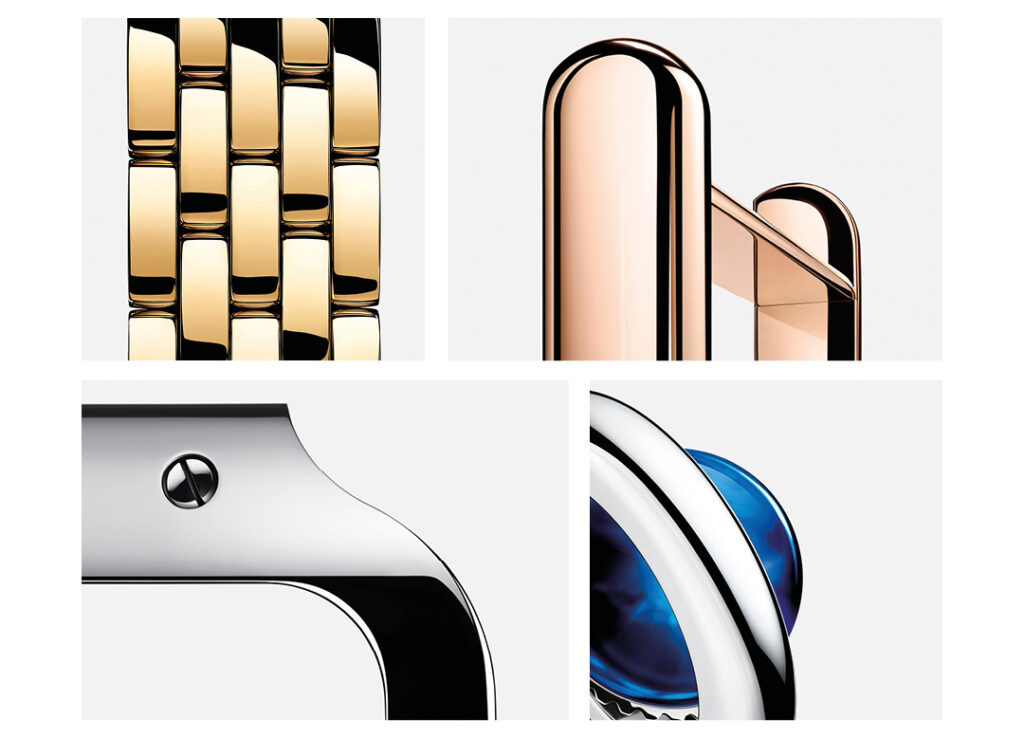
We’ll do this by pairing the four principles with four of Cartier’s most iconic watches. (Though it should be understood that every Cartier watch comprises all of the principles.) A proper review would not be complete without mentioning the mastermind who cultivated “The Culture of Design”. While each of the members of the Cartier family played an instrumental role in the brand’s global success, credit for its name being synonymous with iconic designs falls squarely to Louis Cartier. It was his method of interpreting the many influences that inspired him through shape, line, details and proportions that informed the code.
![]()
Accuracy of Shape – Santos de Cartier
Shape, above all, is what sets Cartier watches apart. A unique ideology pioneered by Louis Cartier in the late 19th-century when he first joined the family business and began designing pocket watches. Unperturbed by the norm of round designs, he explored the possibilities of shapes to produce some truly unique and elegant objects. The Santos – originally a prototype produced for Brazilian aviation pioneer Alberto Santos-Dumont, in 1904 – was derived from one of these non-circular creations. A square model with rounded angles, the shape naturally lent itself to integrating a bracelet via attachment horns. And its flat design made it suitable for wearing on the wrist.
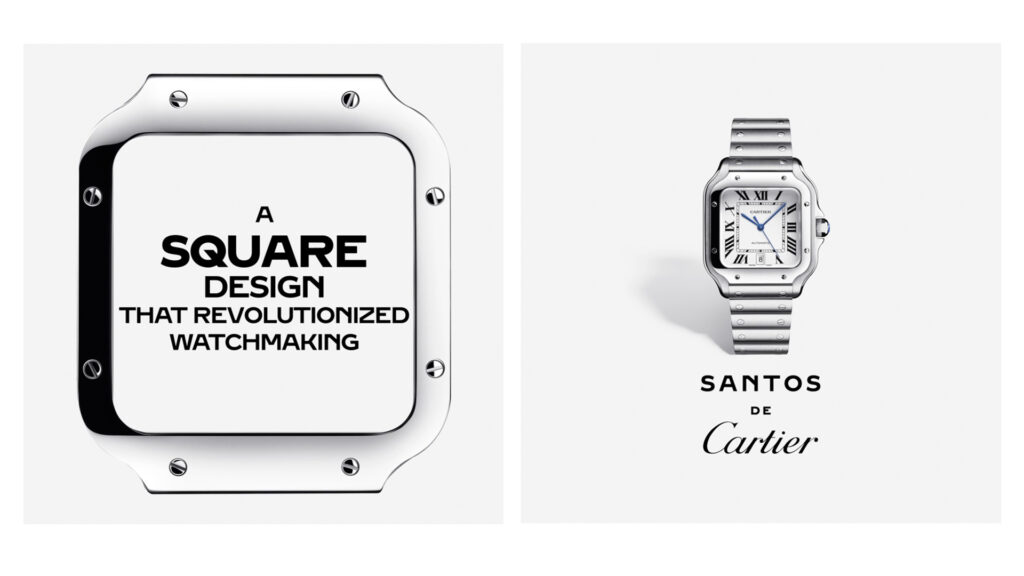
First made available to the public in 1911, today this iconic square watch with rounded angles remains unmistakable on the wrist. Its success solidified a formula for watchmaking that continues to this day: begin with the shape. What can be created from a square for instance? What effects of symmetry, parallelism or asymmetry does it offer? What does adding curves do? This is “The Culture of Design” process. Put simply, the shape of a Cartier watch renders it instantly recognisable. But don’t be fooled by the simplicity of this concept. Great care goes into its conception.
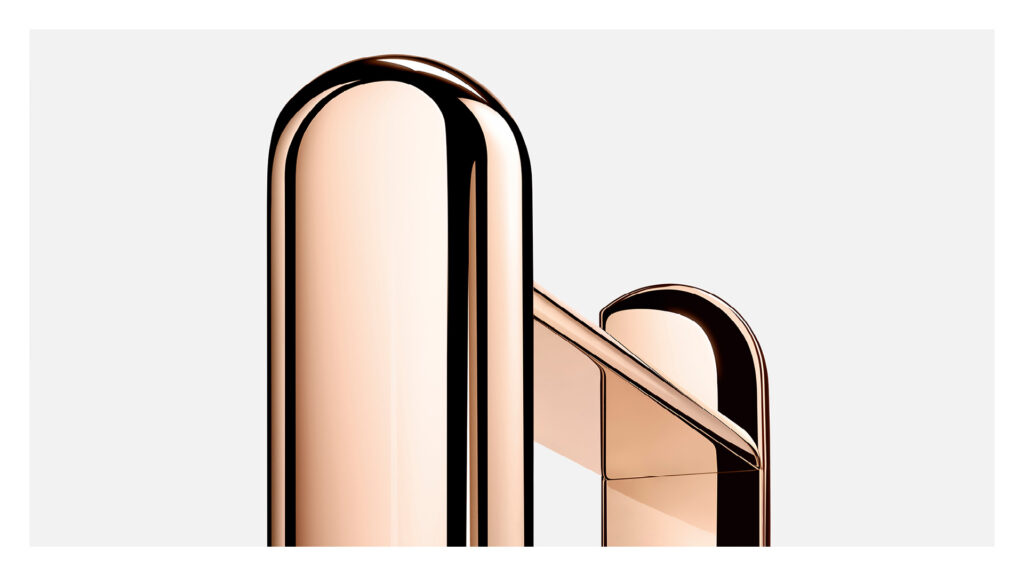
Purity of Line – Tank
Unlike a jewel, a watch is not a single solid form but a combination of multiple parts. This complexity threatens the integrity of the shape. Line, as the term is used in “The Culture of Design”, refers to the way Cartier handles the architecture of a watch. The Maison seeks to reduce the various components to the structural necessity they provide. Well-executed lines eliminate any superfluous details and leave us with the purest form possible. This obsession for pared-down simplicity dictates features that are intuitive and accessible, resulting in timepieces that are attractive yet easy to wear and read.
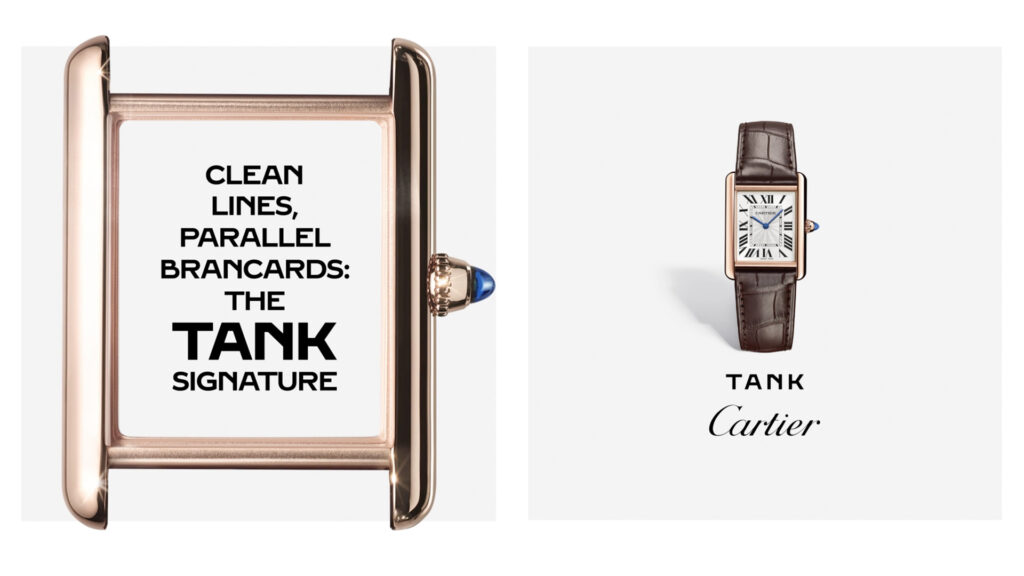
The Tank epitomises line at its best. When Louis Cartier looked at press pictures of the first tanks in 1917, he saw the ideal graphic principle for a wristwatch: the treads were the brancards, the turret the case. The tank shape provides natural attachment horns that align with the strap, maintaining continuity with the case. This reduces the need for additional structure. The parallel brancards constitute the purest lines by which a wristwatch can be formed. So pure that the Tank is recognisable merely by its silhouette. Line also refers to design of the Cartier dial, artfully reduced to the essential for optimal legibility.

Precious Details – Panthère de Cartier
Attention to detail is synonymous with fine timepieces. But when it comes to Cartier, these understated finishing touches are executed with the stylistic intuition of a jeweller. “The Culture of Design” excels at drawing out and accentuating the beauty to be found in the form. It’s daring to leave screws visible, knowing when to contrast lustrous finishes with matte, and ornamenting the crown in a way that is both pleasing and functional. Like designing a ring or precious bracelet, the details must have meaning, otherwise be omitted. Their role is to enhance the overall piece as a whole.

With the Panthère watch, Cartier aspires for clean lines without losing a creative, linear softness. Here, meaningful details are found in the bracelet, from which the timepiece takes its name. Each individual link merges to form an ultra-flexible structure, emulating the supple movements of the Maison’s emblematic big cat. When it launched in 1983, the Panthère watch introduced the concept of a jewellery watch (without the embellishment of precious stones necessarily). This flair for creating timepieces through the eyes of a jeweller speaks to our innate recognition for objects of great value. Details ensure the watch’s best side is always on display.

Precision of Proportions – Ballon Bleu de Cartier
Finally, we come to proportions. Perhaps the subtlest, most under-appreciated aspect of the design process. Yet it is here that Cartier’s jewellery background comes most to the fore. For to be the jeweller of kings means to specialise in feature pieces made to be worn. The precision of proportions is the balance between shape and line in the context of how you wear the piece. In conceiving shape, line and details, “The Culture of Design” gives equal importance to how these are brought together for the optimum wearer experience. It needs to look right and feel right.
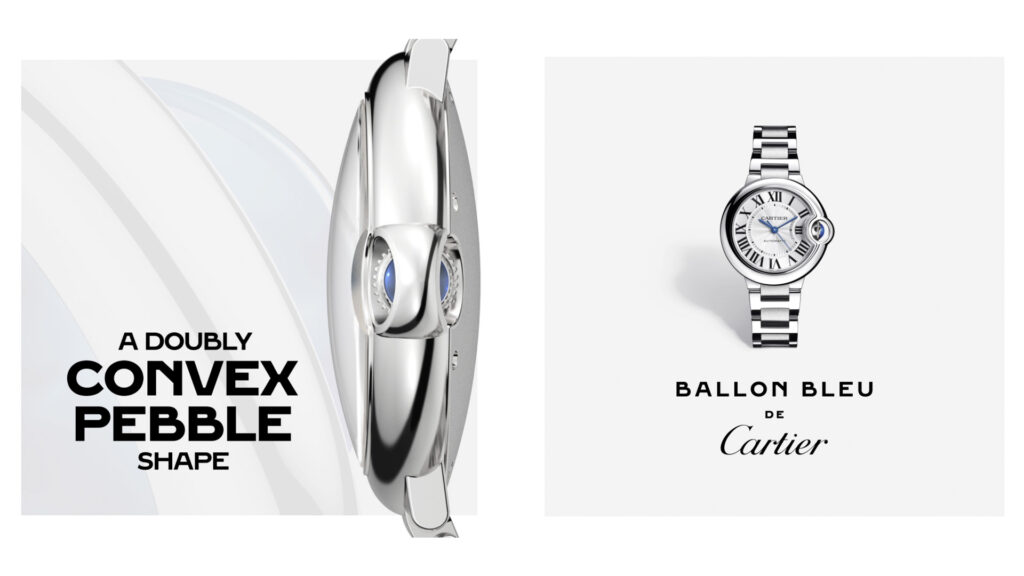
To understand this, consider the Ballon Bleu de Cartier created in 2007. Doubly convex (rounded on both top and bottom), its unique personality and comfort is best appreciated when worn. The precision of its proportions dictates the perfect volume. Reminiscent of a pebble perfectly polished by gentle tides. It tends to nestle into the wrist, becoming one with your arm. Many credit the ongoing success and popularity of the Ballon Bleu watch to its eminent wearability. Like all the watches discussed, its design combines all four principles. But its finesse with proportions is what has seen this modern-day classic swiftly ascend to one of Cartier’s best performing models.
To experience the effect of Cartier’s ” Culture of Design” and its guiding principles first-hand, visit your nearest Watches of Switzerland Boutique today. Our friendly and professional staff will be pleased to present you with a selection of the Maison’s latest models and answer any and all questions that you may have. And remember to take the time to really marvel at how the concepts of shape, line, details and proportions have formed these fine timepieces into enduring icons.








 Rolex
Rolex A. Lange & Söhne
A. Lange & Söhne Blancpain
Blancpain Breguet
Breguet Breitling
Breitling Cartier
Cartier Hublot
Hublot Vacheron Constantin
Vacheron Constantin IWC Schaffhausen
IWC Schaffhausen Jaeger-LeCoultre
Jaeger-LeCoultre OMEGA
OMEGA Panerai
Panerai Roger Dubuis
Roger Dubuis TAG Heuer
TAG Heuer Tudor
Tudor FOPE
FOPE Agresti
Agresti L’Épée 1839
L’Épée 1839



